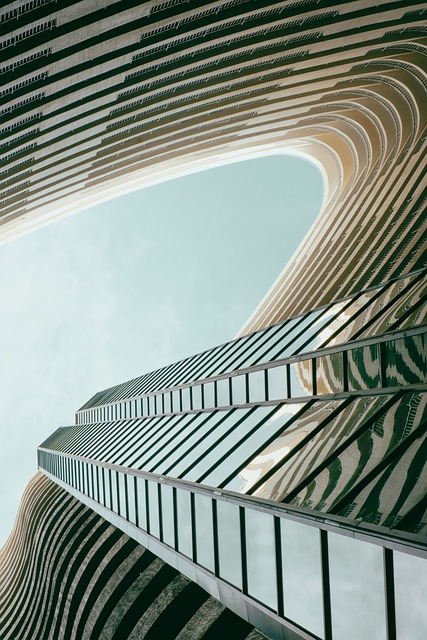- Use Leading Lines in Architectural Photography:
Lines like roofs, walls, or staircases help guide the viewer’s eye and add depth and structure to your shot.

- Natural Lighting in Architectural Photography:
Shoot during golden hours (early morning or late afternoon) for softer light and better detail. Avoid the harsh midday light.

- Make Use of HDR:
HDR can help balance exposure issues and capture more detail in both shadows and highlights.

- Keep Vertical Lines Straight:
To avoid skewing, keep vertical lines straight. Use a tilt-shift lens or post-editing software to correct this if needed.

- Focus on Details and Textures:
Pay attention to small details and unique textures in the building. Capturing these on a macro or large scale adds depth and brings out the building’s character.
- Symmetrical Composition:
Many buildings are symmetrical; you can capture this by centering your camera for a balanced shot.

- Experiment with Unique Angles:
Instead of going for a classic view, try shooting from different angles to surprise your viewers.
- Use the Right Gear:
A tripod is essential for clear, stable shots, especially when capturing fine textures and details.

- Understand the Interior and Exterior Layout:
Spend time understanding the building’s layout, both inside and out. Check where shadows fall and how light interacts with the space.
- Focus on Colors and Contrast:
Colors and contrast are important in architectural shots. Adjust them to make your photos more eye-catching.
- Use Reflections in Architectural Photography:
Reflections in water, glass, or metal add depth and can offer a fresh perspective on the building.
- Add Human Elements in Architectural Photography:
Including people in the frame shows the scale of the building and brings life to the shot.

- Capture Light and Shadow Changes:
Light and shadows change throughout the day. Shooting at different times can add variety and dynamism to your photos.
- Long Exposure Technique:
Long exposure can create unique effects, like showing clouds in motion or blurring moving elements around the building.

- Patterns and Repetition:
Architecture often features repeated patterns like columns or windows that add visual appeal.

- Go Black and White:
Some buildings look particularly striking in black and white, emphasizing textures and details.
- Leave Negative Space:
Leaving empty space around the building helps draw focus to it and reduces background distractions.
- Play with Perspective:
Try shooting from different heights or use a drone to get fresh perspectives on the building.


- Careful Post-Editing:
Final edits, like adjusting color balance, sharpness, and perspective, can greatly enhance the quality of your photos.
- Try a Unique Angle:
Sometimes, looking at the building from unusual and non-traditional angles can create an interesting and fresh viewpoint.

- Include Surrounding Space:
Show the natural or urban surroundings to give context and complete the picture of the building’s setting.
Conclusion
Architectural Photography: A Blend of Art and Insight
Architectural photography is more than capturing buildings; it’s about preserving stories, showcasing creativity, and revealing how design shapes our world. This art form emphasizes balance, perspective, and light, teaching us to see spaces differently. By focusing on textures, patterns, and compositions, photographers bring out the character of structures, helping us appreciate the beauty and functionality of architecture.
This type of photography also helps document cultural and historical significance, showing how spaces evolve over time. By experimenting with angles, reflections, and human elements, we not only create visually stunning images but also connect viewers emotionally to the places they see.
Ultimately, we hope that the tips shared in this article will help you enhance the quality of your architectural photography and inspire you to capture fascinating stories through your images.



